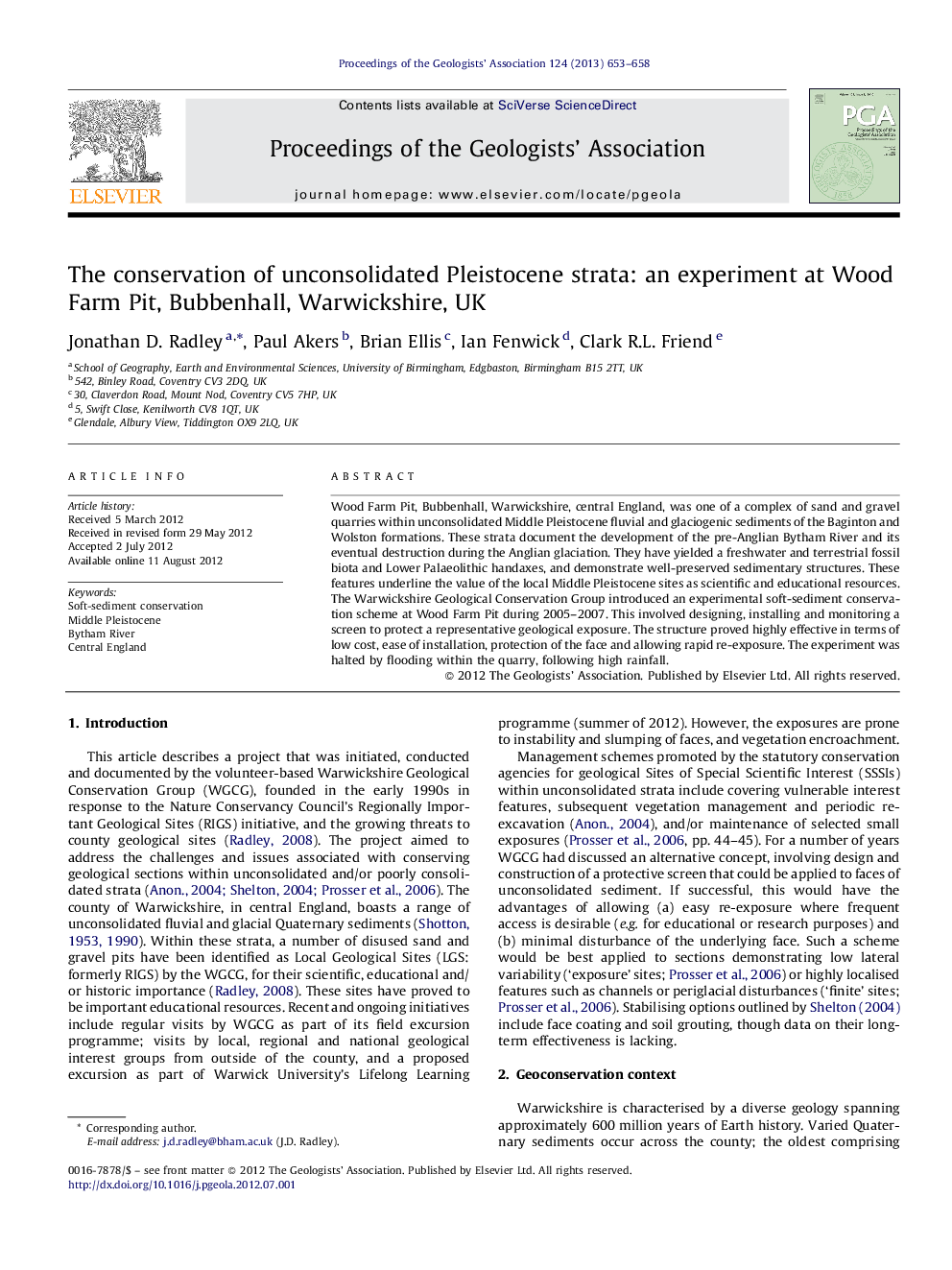| Article ID | Journal | Published Year | Pages | File Type |
|---|---|---|---|---|
| 4735035 | Proceedings of the Geologists' Association | 2013 | 6 Pages |
Wood Farm Pit, Bubbenhall, Warwickshire, central England, was one of a complex of sand and gravel quarries within unconsolidated Middle Pleistocene fluvial and glaciogenic sediments of the Baginton and Wolston formations. These strata document the development of the pre-Anglian Bytham River and its eventual destruction during the Anglian glaciation. They have yielded a freshwater and terrestrial fossil biota and Lower Palaeolithic handaxes, and demonstrate well-preserved sedimentary structures. These features underline the value of the local Middle Pleistocene sites as scientific and educational resources. The Warwickshire Geological Conservation Group introduced an experimental soft-sediment conservation scheme at Wood Farm Pit during 2005–2007. This involved designing, installing and monitoring a screen to protect a representative geological exposure. The structure proved highly effective in terms of low cost, ease of installation, protection of the face and allowing rapid re-exposure. The experiment was halted by flooding within the quarry, following high rainfall.
